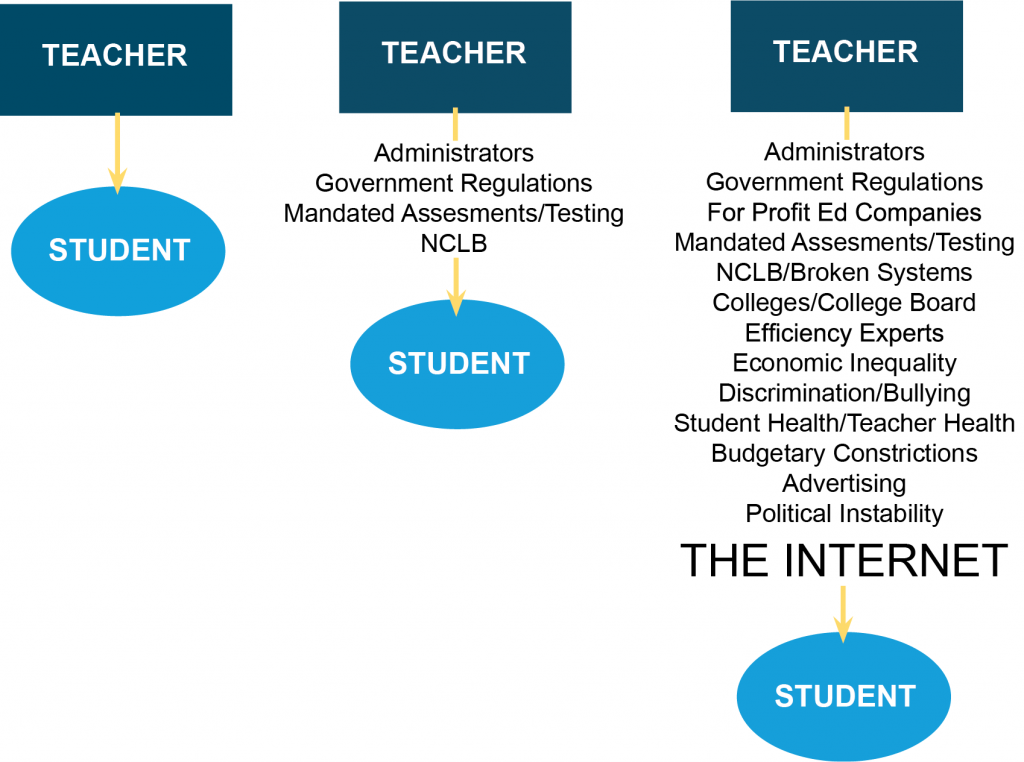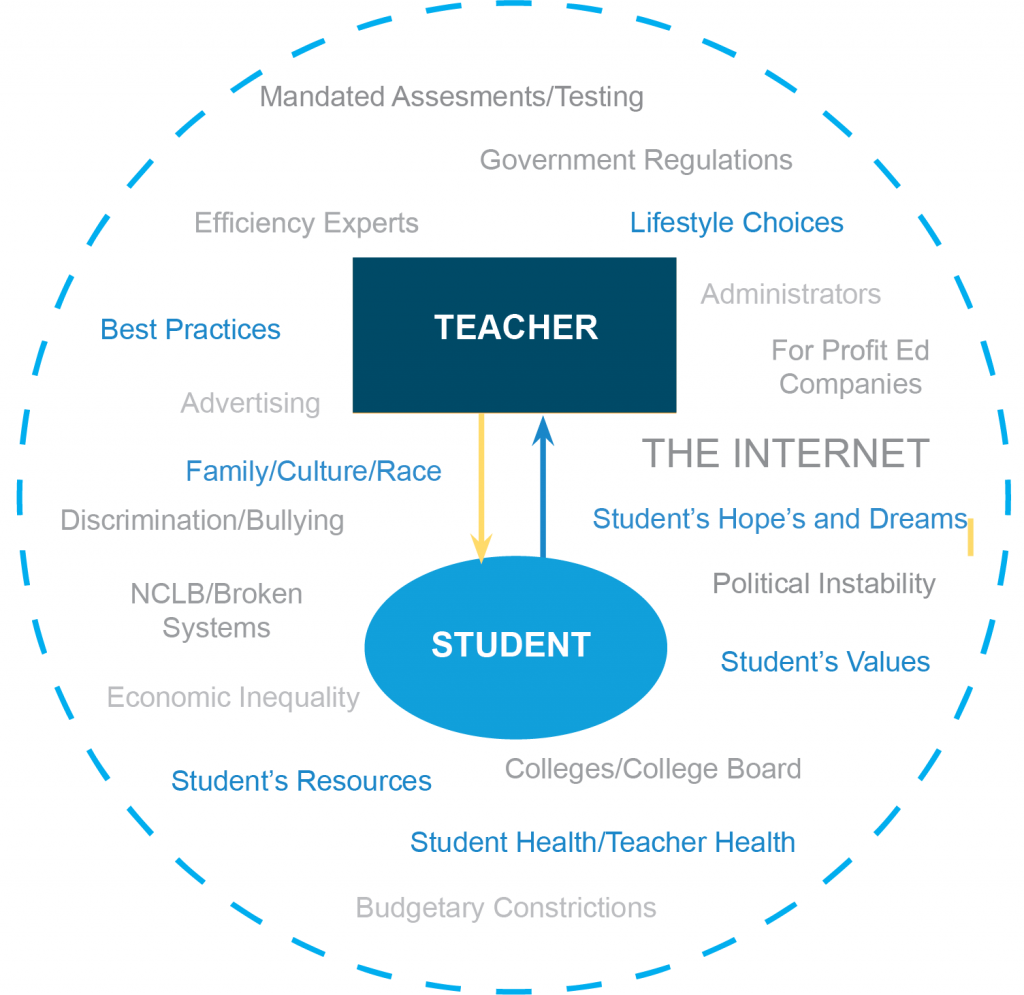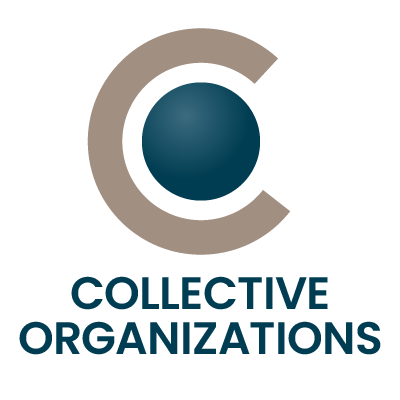With access to social media and information networks, students with a spectrum of abilities can gain access to infinite amounts of information. They communicate, collaborate, carry out plans, self actualize, effect change, and express ideas without leaving their bedrooms!
Contrast this with a typical classroom experience and it's clear why the current model is unsustainable and not serving many of our students.
Teacher-Student Contact

Most students can access university libraries, global viewpoints, and each other, in multiple time zones 24 hours a day. This has radically changed the balance of knowledge as well as power dynamics between students and teachers.
Netflix and HBO have seen young people reject the traditional narrative of the Hero’s Journey, and students are turning away from institutions that were formed by this narrative. If we're going to serve young learners, we need to understand the interconnected world they inhabit is vastly different from the one that informed our values, choices, systems, and institutions.
Teacher-Student Collaboration

We're educating children living in a global, communal narrative that embraces interdependence and leverages self-determination.
To have influence, educators must participate, understand, and be able to integrate these narratives into their teaching. instead of managing and directing students, a Collective model for education reframes the role of teachers as facilitators, encouraging students to collaborate, take creative risks, learn through exploration, and advocate for their needs by questioning and remedying the systems that no longer serve them.
Consider how the Hero’s Journey model informs the way we currently teach in schools:

There is a Singular Hero. Students compete with each other and certain individuals rise to the top of a “one size fits all” education system.

Driven by Fear. Those who fit into the system can find success (but there is only room for a few at the top!) Failure and mistakes are feared and stigmatized.

It's Linear. Knowledge is gained in a linear fashion, separated by subject matter. Students are taught ideas individually, in a singular dimension.

There is a Singular Villian/Problem.
Problems (and ideas) are presented and addressed individually instead of being seen as part of a greater system. Those in power often work to preserve the status quo.

Driven by a Masculine Impulse.
Students are given narrowly defined models for achievement. Success in the form of superiority or dominance is valued.

The World is Binary. “Pass vs. Fail” The world is viewed as good or bad, positive or negative, usually from their singular viewpoint. Achievement is determined by competition within the dominant culture.

Not Conducive to Technological Communications.
The system is built on knowledge scarcity. Collaboration could be considered “cheating” and students equate knowledge with superiority and power.

There is a Single Mentor.
Knowledge is accessed from a teacher (often someone who thrived within the current system) who teaches an approved curriculum.

Celebrates Individual Power Successful students are rewarded with disproportionate status and membership in the “elite.” They are considered separate from (and superior to) their peers and often perceive success as leaving their community.

The Individual & The Community Lose.
Students who are different (whether they excel or struggle) are not considered fully a part of the community. The community relies on those in power, and those who excel within the system, to define them. This means they're unlikely to create positive change.
The Collective Journey suggests a way to reframe education and engage students and teachers in learning:

Learners are Members of a Collective. Students are learning together and working toward what's best for their community.

Driven by a Cause.
Beyond success or survival in the system, students are discerning what is meaningful and vital to them. Failure is embraced as part of a process.

It's Non-Linear. Knowledge comes from multidimensional places and viewpoints, combining subjects, perspectives, and ideas.

The Problem is the System.
Leaders acknowledge the system is broken and empower students to change the status-quo to make their world better. Problems are seen as interrelated and multisystemic.

Non-Gendered. Everyone can be empowered. Diversity is embraced as necessary to problem solving. Success is seen as a collective achievement that benefits all.

The World is Non-Binary.
Goals include mutual understanding and mutual empowerment. Perspectives come from multiple viewpoints. Success is defined by individuals based on their values.

Conducive to Technological Communications
The system is built on the accessibility/abundance of knowledge. Collaboration is the ideal. Students share information to benefit the greater community.

Mentorship is Distributed
Knowledge is accessed from multiple sources with different backgrounds. Each offers a unique ‘wisdom viewpoint'.

Celebrates COMMUNITY.
People coming from different angles work together to address problems. Students across the globe help each other achieve their potential. Their reward is satisfaction and full participation in their community.

The Individual & the Community Win
The successful student sees themselves as one of many who have made a significant contribution with their unique abilities. The community does not need a traditional "leader" to rise above others because it is empowered to create positive and necessary change.

